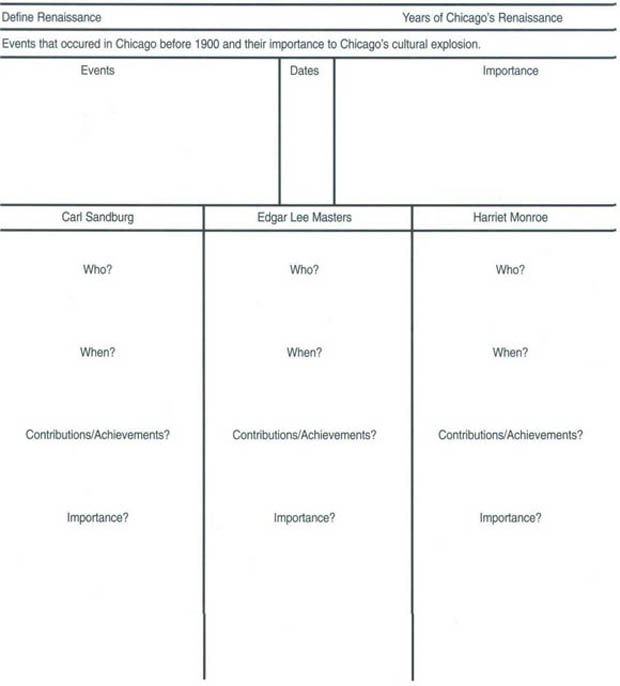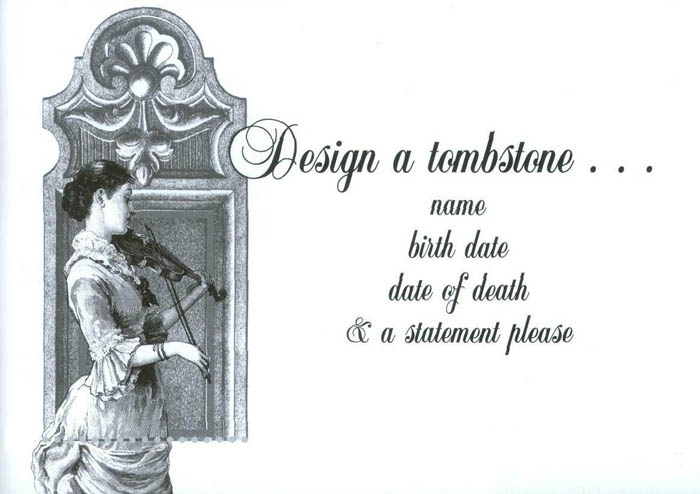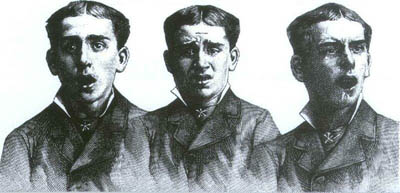 |
Home | Search | Browse | About IPO | Staff | Links |
 |
Home | Search | Browse | About IPO | Staff | Links |
|
CURRICULUM MATERIALS
Elizabeth H. Miller
Overview
Main Ideas
Connection to the Curriculum
Teaching Level
5
Materials for Each Student
The narrative portion of this article
Objectives for Each Student
Learn and use skills to enable students to read the narrative with understanding.
Opening the Lesson
Developing the Lesson
Activity 1 presents a structure for the students to write down important information from the narrative and draw conclusions about the significance of events of the period. Using their completed chart, they could be required to write an in-class summary of the narrative that would help reinforce the reading and enable the teacher to evaluate how well they understood the content. Activity 2 introduces the student to Carl Sandburg's poem "Chicago," and provides questions to examine the literal meaning of the poem as well as opportunities for interpreting and expressing individual understanding of the poem. After reading the poem silently, have students choose the lines of the poem they like best and read them for the class. Then, read the entire poem aloud, as the language of "Chicago" lends itself to being heard. Familiarize students with the poem before assigning classwork or homework. What words in the poem illustrate the personification of the city? What elements of work are described? What group of Chicago people are the focus of the poem and how are they depicted? Activity 3 presents an opportunity for the students to interpret the citizens of Spoon River in a choice of creative expression. Have the class work on only one of these projects so they can work individually and together. To provide them with an example of the assignment, choose one poem from Spoon River Anthology, providing each student with a copy of it so he can examine the person, think about how (s)he could be characterized, or what could be said in a newscast. The class can share ideas about how to do the assignment and ask questions before the project begins. Activity 4 places the students in Chicago at the turn of the century. Individually they must research a topic or person that will fit into a larger picture of the era. In small groups they will decide how all these topics can be meaningfully arranged into a history of the period that will be presented in their own historical magazine. Upon completion of the project, see if the school library will display the magazine and allow it to be checked out to other students in the school. Activity 5 requires students to predict both positive and negative outcomes of events and actions. Students will gain an understanding that historical events and ideas are not simple, but complex, that they can be interpreted differently by people, and that these differences are comprehensible and should be valued as individual expression even if the student does not agree. Activity 6 offers students an opportunity to express a negative view of an event, idea, or historic period. They will have to think carefully about their choices in order to present an argument or view that is critical, perhaps even unpopular, and be ready to defend their perspectives. 6
To assist the teacher in adding to the narrative, a number of videos that investigate aspects of the era are available from the Film/Video Center of Chicago's Harold Washington Library, 400 S. State Street to holders of Chicago public library cards.
"City in a Garden: Parks and Plans"
Concluding the Lesson
Discuss with the students how the intellectual/artistic life of a community expresses itself in how a city looks (i.e. architecture, gardens, parks), the institutions it supports (museums, orchestras, theater, service agencies, universities, sport teams), and the way it feels about itself (optimistic, excited, concerned, proud). Are all groups of people included in such a phenomenon? If no, who is not and why? Draw the students to the activities they undertook to find examples that illustrate the relationship of ideas and outcomes. Create a timeline of Chicago's history, 1890-1925, using all the events that the class investigated as part of their assignments. It should support the idea that many varied activities went on in the city during the thirty-five years. Discuss the categories of events that occurred and how they might be related.
Extending the Lesson
Contact an alderman or a community or business leader to discuss Chicago's twenty-first century future and the element of change and/or renaissance with the class. Have the students prepare questions for the guest speaker. Contact a local book store for suggestions of a poet or author who could come to speak to the class about literary life in Chicago today, how they find inspiration for their words in the city, and other information about being a poet or writer. If the students have written their own poems about Chicago, share them with the guest. Also, have students share the copy of the class historical magazine if that assignment was undertaken. Field Trips in Chicago: Lessons should be created to fit with each trip so the students are pro-active in their learning away from the classroom. Walking Tour of early Loop Skyscrapers:
Monadnock Building, 53 W. Jackson; Rookery Building, 209 S. LaSalle; Reliance Building, 36 N. State; Carson Pirie Scott Store, Southeast corner State and Madison; Auditorium Building, Northwest corner Michigan and Congress. More modern skyscrapers (Richard J. Daley Center, Klucynski Federal Building, James R. Thompson Center/State of Illinois Building, Sears Tower). Resource: Chicago Architecture Foundation, 224 S. Michigan, (312) 922-3432.
Assessing the Lesson
7

8
To an artist, paint and canvas are used to present a picture. For Carl Sandburg it was words that encouraged the reader to form images. Read the poem "Chicago." Answer the following questions and choose to do one of the two activities.
CHICAGO
Hog Butcher for the World, Tool Maker, Stacker of Wheat, Player with Railroads and the Nations Freight Handler; Stormy, husky, brawling, City of the Big Shoulders:
They tell me you are wicked and I believe them, for I have seen your
Laughing the stormy, husky, brawling laughter of Youth, half-naked,
9
10
Choose one of the poems in Spoon River Anthology and create a tombstone for the person of your choice. Tombstones of the poem's era could be rather elaborate, so include a design representing your character, the person's name, birth date and date of death, and a short statement describing the individual based on information in the poem. Leave a small space open on the tombstone so you can glue a copy of the poem. Imagine how your person looked and dressed when (s)he was alive. In costume, read your poem to the class. Have your classmates ask questions about your poem person so they understand that life. After the class members have completed their presentations, discuss the kind of people Edgar Lee Masters was writing about. Could he have written about these people when they were alive? Why? Why not? Display the tombstones with poems in the room or school hallway. OR Using the poems in Spoon River Anthology, and imagining these individuals alive, create a newscast about them and life in Spoon River. Working in small groups, write the stories, events, history, culture, and values that you see in the poetry. A character could be in an advertisement or two or more characters could be in the same piece of news, if appropriate. To help you produce an authentic newscast, watch some evening news programs. Tape some of them and view them as a class, discussing the format. Choose classmates to act as anchor persons, specialty reporters, advertisers, and producers of the newscast and present it to your class or other classes. If possible, videotape the production so that students can watch themselves on camera.

11
The cultural and intellectual life of Chicago was very rich and significant at the turn of the nineteenth century. Harriet Monroe gave a part of that expression a voice in the magazine Poetry: A Magazine of Verse. Such a magazine was important for presenting an art form to a wider audience and providing a place for new poets to be published. It is your class's turn to create a written vehicle for the history and culture of the city. Your own magazine, Chicago in Review, 1890 - 1925, will describe the changes and growth of Chicago, not only artistically, but socially, politically, and physically. Express yourselves in essays, poetry, cartoons, historical pictures and drawings using the narrative and outside sources. Your magazine should have an editorial staff, table of contents, and appropriate advertisements. The following individuals and topics could be included.
12
Changes in Chicago and its cultural life were influenced by certain events, developments, new ideas, and individual lives. Explain possible outcomes of the events, conditions, and expressions listed below. Consider both positive and negative results. Use an American history text or other sources if you need more information to draw your conclusions.
13
Not everyone appreciated all the changes in Chicago life at the turn of the century. Some found the new style of poetry unpleasant to the ear and the artists disrespectful to old ways; others found the changes in the city's growth inconvenient, disruptive, unattractive, and happening too fast; many were concerned about immigrants and strikes. Create a cartoon or an editorial expressing your critical or negative feeling about some aspect of Chicago's modernism between 1890 and 1925. Share your project with the class and be able to defend your view.
unpleasant
unattractive uncouth

Click Here to return to the Article 14 |
|
|